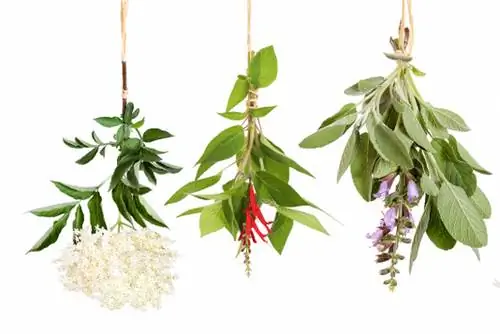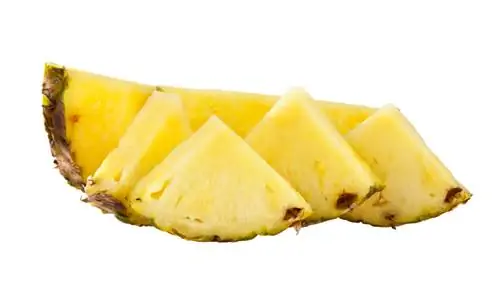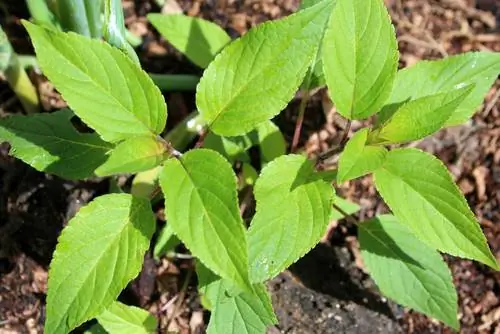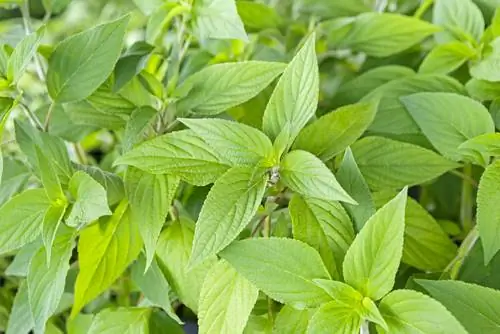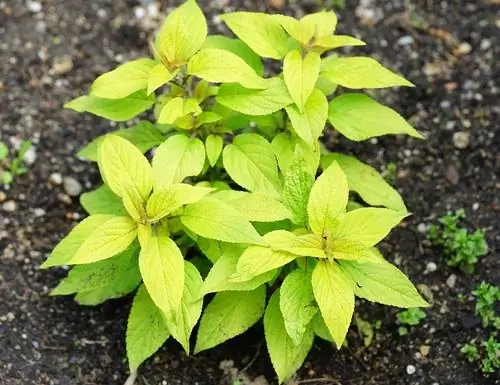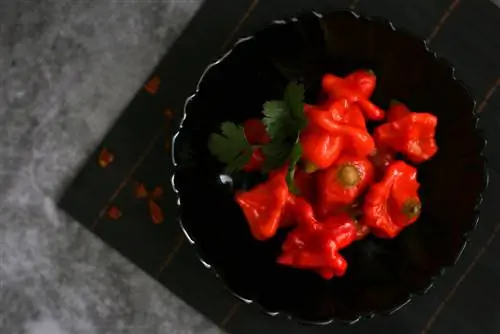- Author admin [email protected].
- Public 2023-12-16 16:46.
- Last modified 2025-01-23 11:22.
Pineapple sage is becoming increasingly popular as a culinary herb. But the harvest usually exceeds demand, so leaves and flowers end up in the compost. The plant parts can be dried using various methods and preserved for later use.

How to dry and store pineapple sage?
To dry pineapple sage, cut off the plant parts in the afternoon and place them on paper towels or use silica gel. Dried bouquets are also a great way to preserve. Store the dry spice in a dark, sealable container.
Dry bouquets
The inflorescences of pineapple sage are suitable for making dried salvia bouquets. Cut off branches that are in full bloom. The ideal time for cutting is late afternoon as there is no morning hoar frost on the leaves. Tie the stems together with raffia (€13.00 on Amazon) and hang the bouquets upside down on a clothesline. Make sure that the raffia is not tied too tightly to avoid pressure points. The bouquets should hang in an airy and dry place so that the drying process is not disturbed.
Alternatively, you can place the cut stems in a vase that you fill with one part glycerin and two parts water. The stems absorb the mixture so that the glycerin settles in the plant parts. The water evaporates and the stems dry out. The remaining glycerin ensures that stems, leaves and flowers remain flexible and do not crumble.
Good to know:
- Complete drying can be recognized by the rustling of the flowers
- Hairspray extends the life of the bouquets
- Flower color is retained by drying in a dark room
Dry spices
You can build up a supply of dry spices through gentle drying. Cut the plant parts with a sharp knife so that they are not destroyed and the essential oils are preserved. Harvest the leaves and flowers in the afternoon and lay them out individually on a plate lined with kitchen paper. This will be placed in a warm and airy place for the next two weeks. After drying, the plant parts are stored in a dark, lockable container.
Faster drying
With the help of silica gel, you can dry pineapple sage plant parts within a week. Place the beads in the bottom of a can and spread the collected leaves and flowers on top. Cover the plant parts with the gel beads and close the container. The balls are harmless to he alth and absorb moisture.

